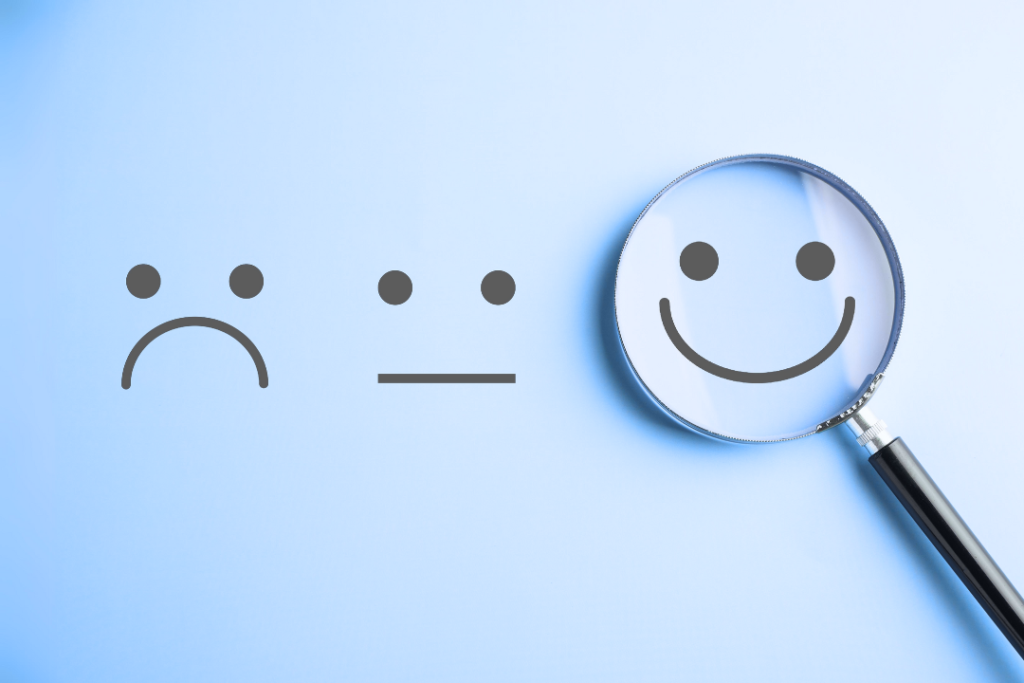
What is Customer Effort Score & how to make it better?
The Customer Effort score is the only method you need if you want to gauge customer happiness (CES). A metric called CES tracks the amount of effort customers make to interact with your business.
It’s an excellent way to determine how simple (or challenging) it is for customers to receive what they require from your company. We’ll talk about what CES is in this blog article and how to make it better!
What is the customer effort score?
When consumers engage with your business, the Customer Effort scores statistic tracks how much work they put in to get the results they want.
It’s a technique to determine if customers find it simple or challenging to achieve their objectives while working with your company.
The purpose of the Customer Effort scores is to assist companies in finding opportunities to improve the consumer experience.
Unlock Unlimited Surveys & Responses with Fynzo Survey – 99% Features Free Forever!
⭐ Rated #1 Trending Survey Tool by Software Suggest ⭐
Why Choose Fynzo Survey?
- Unlimited Surveys: Create as many surveys as you need without any limits.
- Unlimited Responses: Collect unlimited responses effortlessly.
- 99% Free Features: Access nearly all our powerful features for free, forever.
- User-Friendly: Easy setup, create your survey in minutes.
How Are the Customer Effort scores Calculated?
The Customer Effort score is commonly calculated on a scale of 0 to 100, where 100 represents the highest level of satisfaction and 0 represents the lowest.
Businesses must first collect information from customer surveys in order to determine the amount of effort needed from the customers. They then calculate the “Customer Effort score” for their business by averaging all of the customer ratings.
These kinds of surveys concentrate on top-level data to provide an overview of how your customer’s endeavor is doing. It has great potential for company expansion!
Why is Customer Effort scores measurement important?
The use of Customer Effort scores as a customer satisfaction indicator has several advantages.
- It gives organizations vital information about how simple (or difficult) it is for consumers to achieve their objectives while dealing with their firm. This data may be used to pinpoint areas where the customer experience can be enhanced.
- It is an excellent tool for comparing customer loyalty levels across various firms. This may assist organizations in benchmarking their performance and determining where they need to improve.
- A Customer Effort score survey may help you enhance your customer experience, increasing customer loyalty and the likelihood of future purchases.
- Providing feedback to your customer support personnel helps to build a seamless experience, which is crucial for any successful organization.
- It is an important statistic for organizations since it is simple to comprehend and use. As a result, it is a perfect tool for decision-makers looking to swiftly and simply discover opportunities for development inside their organization.
It is a fantastic choice if you want to create a low-effort experience! It offers insightful information on the customer experience in an easy-to-understand manner.
Additionally, you may increase overall customer loyalty across your firm by maintaining low customer effort ratings and high customer effort scores.
Unlock Unlimited Surveys & Responses with Fynzo Survey – 99% Features Free Forever!
⭐ Rated #1 Trending Survey Tool by Software Suggest ⭐
Why Choose Fynzo Survey?
- Unlimited Surveys: Create as many surveys as you need without any limits.
- Unlimited Responses: Collect unlimited responses effortlessly.
- 99% Free Features: Access nearly all our powerful features for free, forever.
- User-Friendly: Easy setup, create your survey in minutes.
What Kinds of Customer Effort scores Surveys Are There?
Businesses can utilize one of three basic CES survey styles to get CES feedback and track consumer experience metrics:
1. Net Promoter scores (NPS)
This customer loyalty statistic gauges how probable it is for consumers to refer your business to others. It’s a reliable indicator of customer loyalty and satisfaction.
The most common survey method for gauging customer effort is the Net Promoter scores survey. On a scale from 0 (not at all probable) to 10, this sort of survey asks consumers how likely they are to suggest the business’s goods or services to others (extremely likely).
2. The Customer Satisfaction scores (CSAT)
This customer satisfaction statistic gauges the level of consumer happiness with your business. It’s a reliable indicator of customer loyalty levels.
Customers are asked to rate their overall satisfaction with a product or service on a scale of 1 (extremely unhappy) to 5 in this typical survey type (very satisfied).
3. Customer Effort scores (CES)
Businesses may utilize this tool to compile customer effort score data. Customers are asked to complete a brief survey that asks them how much effort they put out while dealing with your business.
The CES survey type gauges the amount of work a customer must put in to get what they need from a business. Customers are asked whether they strongly disagree or strongly agree with a statement along a scale that ranges from 1 (very little effort) to 7 (extremely high effort).
These surveys are all useful tools for gathering CES information. However, since it directly assesses consumer effort, the CES survey is typically seen to be more accurate.
Monitoring survey results is crucial, as is selecting the right technology to calculate your customers’ effort scores. Responding quickly to negative comments may have an impact on future purchasing behavior.
How Can I Use the Customer Effort score Results Data?
By examining your customer feedback, you must calculate the CES after you have your data. Following that, you can use these findings to gain important insights for generally reducing consumer effort.
Correct data analysis may genuinely operate to boost customer lifetime value by influencing future customer purchasing behavior. Given how crucial this is, be sure to spend money on an appropriate CES survey template when developing your CES surveys.
Let’s talk about how you can utilize this information to advance your company now that you understand what the CES is and how to measure it.
A few essential applications for CES data include:
1. Discover opportunities for improvement
Use CES data to identify areas for improvement in the customer experience. This data may be utilized to make improvements that make it easier for customers to engage with your firm.
2. Benchmark performance
Compare consumer behavior across departments using CES data. The CES benchmark may be used to compare your company’s customer experience to that of others and identify areas for improvement.
3. Make a decision
Use CES data to decide where to devote resources to enhance the consumer experience. This data may be used to select modifications that will have the greatest effect on providing a low-effort experience.
A useful statistic for companies of all sizes is the customer effort score. With greater knowledge of your consumers’ interactions with you, you can use CES data to enhance the operation of your business.
Remember that you may use the CES to pinpoint instances of high-effort service interactions and pinpoint places where you can reduce customer effort. The Customer Effort scores may also be used to contrast how various businesses treat their customers.
Unlock Unlimited Surveys & Responses with Fynzo Survey – 99% Features Free Forever!
⭐ Rated #1 Trending Survey Tool by Software Suggest ⭐
Why Choose Fynzo Survey?
- Unlimited Surveys: Create as many surveys as you need without any limits.
- Unlimited Responses: Collect unlimited responses effortlessly.
- 99% Free Features: Access nearly all our powerful features for free, forever.
- User-Friendly: Easy setup, create your survey in minutes.
How Can Your Customer Effort scores Be Raised?
There are many strategies to raise your customer effort scores. The most successful strategies being:
Deliver top-notch customer service.
This is the most crucial element in raising your customer effort scores. Ensure that you provide top-notch customer service at all times.
Make it simple for customers to get in touch with you: Make sure your contact details are visible and that customers may reach you via a number of methods (phone, email, chat, etc.).
It aims to continuously monitor consumer behavior by conducting customer surveys. All customer success teams should be concerned with the following issues:
- Quickly resolve consumer issues: Make certain that you are addressing consumer complaints as soon as feasible.
- Improve your website: Make sure it is simple to use and browse.
- Reduce customer effort: Make it as easy as you can for your Customers to conduct business with you. To minimize the steps necessary to complete a task.
- Improve the customer experience: Use CES data to find areas for improvement in the customer experience. Take action to improve such issues.
- Create a smooth customer journey: Ensure that the customer’s journey is smooth and simple to follow. Remove all potential sources of friction.
You may raise your CES rating and provide your customers with a better experience by paying attention to these suggestions. Customer happiness and loyalty will both rise as a result of this.
Always keep an eye on your CES and strive to make improvements when you can. Your company’s and your customer base’s needs will determine what a decent customer effort score is.
However, scores of 70 or more on average is often seen as being excellent. A high customer effort score (CES) indicates that your consumers perceive doing business with you to be simple.
When Should Your CES Surveys Be Sent?
You’ve designed a fantastic Customer Effort scores survey, and you’re prepared to begin collecting data. But when exactly should a CES survey be sent?
The optimal time to conduct a CES survey will depend on your industry and customer. However, there are certain broad rules you may adhere to:
- Sending the survey soon after the customer encounter: It will help guarantee that the data is accurate and useful.
- Don’t send too many surveys: If you send too many surveys, customers may feel irritated and may begin to disregard them. Strike a balance so that you don’t overwhelm your consumers.
- Consider the customer’s journey: Consider when throughout the customer’s journey is the optimal moment to submit a survey. For example, you might want to send a survey after a consumer has made a purchase or has had time to utilize your product.
By following these guidelines, you can identify the optimal timing to deliver a CES survey to your company. This will assist you in gathering reliable data that you can use to increase customer satisfaction levels.
Unlock Unlimited Surveys & Responses with Fynzo Survey – 99% Features Free Forever!
⭐ Rated #1 Trending Survey Tool by Software Suggest ⭐
Why Choose Fynzo Survey?
- Unlimited Surveys: Create as many surveys as you need without any limits.
- Unlimited Responses: Collect unlimited responses effortlessly.
- 99% Free Features: Access nearly all our powerful features for free, forever.
- User-Friendly: Easy setup, create your survey in minutes.
Conclusion
Customer effort score is a useful statistic that may be used to gauge customer satisfaction, in conclusion. Your company may uncover places for development by comprehending and monitoring customer effort scores in order to lower the proportion of disloyal customers and enhance your organization as a whole.
There are several methods to calculate customer effort scores; be sure to experiment and choose the one that best meets their requirements. You can quickly enhance your customer service and boost customer loyalty by using the Customer Effort scores as a gauge of consumer happiness.
FAQs
1. What’s a good customer effort score?
There is no one “excellent” result because of the large range of scales employed; generally speaking, the higher the CES scores, the better. Answers might be binary (yes or no) or ordinarily scaled (from 1 to 7).
2. How do I improve my customer effort scores?
The customer effort scores can be improved depending on a number of variables, including accurate resources, tactics, tools, and people.







